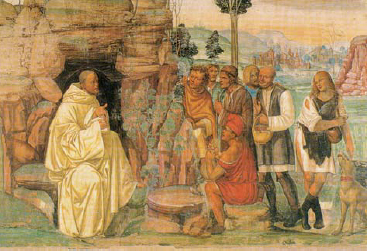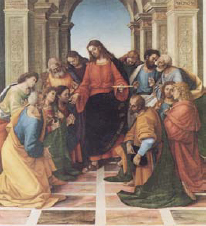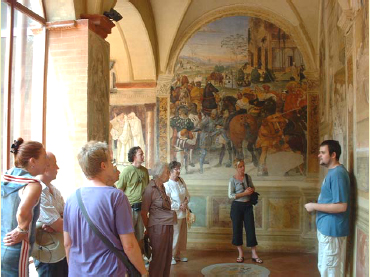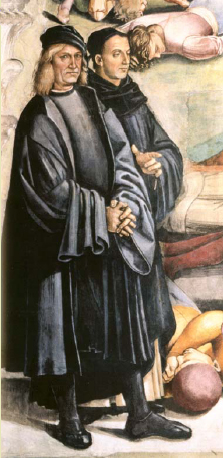|
  
Following the trail of Piero
della Francesca
|
|
|

You
are invited
to take part
in a week’s
historic tour
on location
in and around
the lovely hill
town of Cortona
in Tuscany.
The tour will
include visits
to important
cultural towns
such as Siena,
Arezzo and Orvieto,
where you will
see some of
the most significant
works by artists
of the Early
Renaissance
era.
The
itinerary has
been carefully
designed to
allow study
and discussion
(supported by
slides) of the
political, social
and religious
climate that
influenced many
of the works.
There will also
be lots of time
for sight-seeing
and leisure
activities.
|
|
|
|
|
|
|
|
|
|
|
Colosseum
The Anfiteatro Flavio
Construction of the Colosseum
was started under the emperor Vespavian
and was completed by his son Titus
in 80 A.D. Originally named the
amphitheatre of Flavio, it became
known as the colosseum because of
an enormous bronze statue of Nero
which in the second century A.D.
was placed near by the monument.
The building was used for gladiator
fights, hunting simulations involving
ferocious and exotic animals and
similar entertainments. The building
was constructed with blocks of stone
and brickwork. The outside is composed
of four levels , the first three
of which are made up of 80 arches
while the fourth is divided into
sections interspersed with windows.
On this level were placed both stone
and wooden supports which held an
enormous canopy which served as
a roof to protect the spectators
from the elements. The brickwork
on the inner building was finished
with a marble veneer. The arena
itself was a huge wooden floor covered
with sand while the subterranean
passages consisted of a series of
tunnels where the wild beasts and
various equipment used during spectacles
were held. Holding up to 73.000
spectators, entrance to the Colosseum
was regulated through a ticket system,
with each ticket indicating where
the holder should go through the
internal passages and corridors
to find his or her seat.
|
|
|

